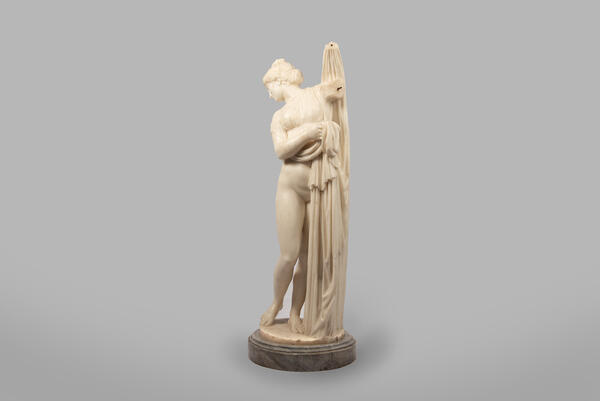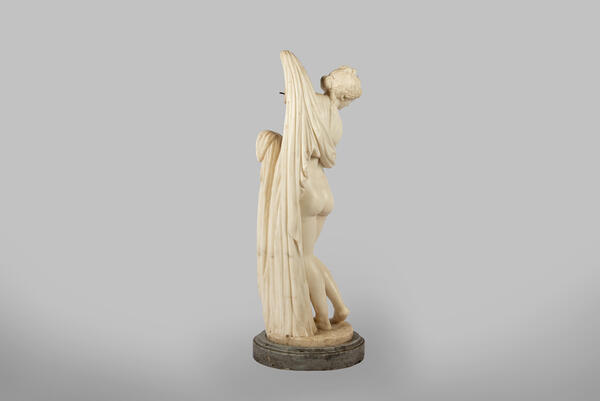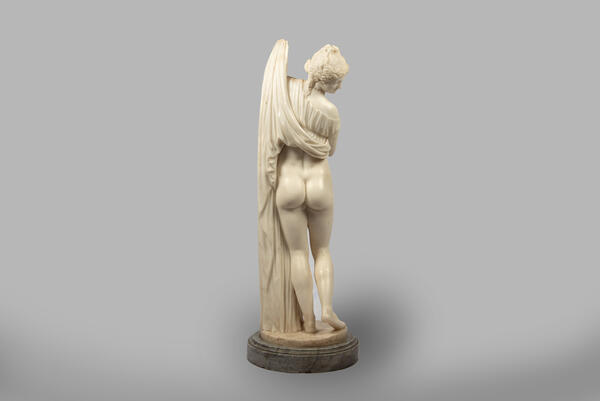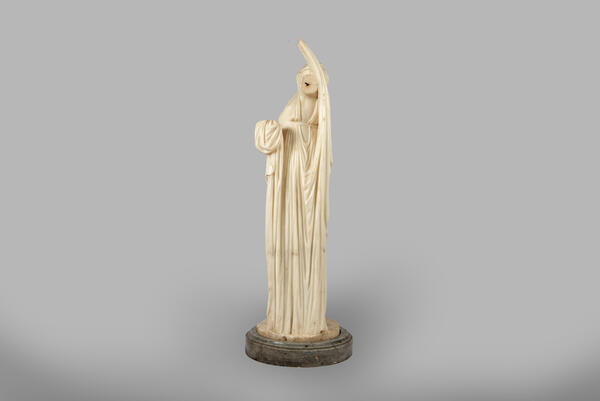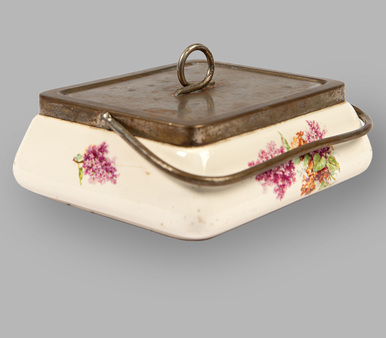Numerous sculptures and compositions created in ancient times are considered masterpieces of all times; and there have been numerous copies and versions with recognizable characters inspired the sculptures. The Kirsanov Local History Museum houses several copies of famous statues, acclaimed works of art.
A plethora of Greek and Roman statues depicting Aphrodite (Venus), the goddess of love and beauty, have survived since antiquity. Traditionally, Venus is depicted as a beautiful woman posing and looking directly at the viewer. The copy of the statue in the Kirsanov Local History Museum is modeled on a statue of Venus, which has an unusual history of its own. Her official name in Greek, Venus Callipyge (Καλλίπυγος), translates as “possessing beautiful buttocks”. The word “callipyge” has two roots: the first means “beautiful” — as in “calligraphy” (literally “beautiful writing”), the second is more common in medicine. The sculpture gets its name from the unusual pose of the goddess.
The goddess Venus is depicted wearing a long tunic, the hem of which is pulled up so that her naked lower body and legs are exposed. She turns away from the viewer, looks back and over her shoulder, lifting her dress (peplos) — as if to make sure she is all right.
There is another translation of the name “Callipyge” — “deafeningly (strongly) beautiful” — but it is not officially accepted.
The history of the original statue dates back to before the Common Era. It is believed that there was first an ancient Greek statue in bronze, made around 300 BC. It has not survived to this day. The one that exists now is a marble copy made for the Romans in the first century BC. It was discovered in the 16th century in Rome in Nero’s Golden House. The statue was part of the collection of the Dukes of Farnese and was given to the National Archaeological Museum of Naples, where it is still housed today.
When the statue was found, it had no head, that is, it did not have the very special gesture that gives the statue its uniqueness. The head, modeled on other ancient female images, was added to the found figure’s body only in the 16th century by a Renaissance sculptor and restorer. The sculpture acquired its present appearance in the 1780s following the restoration carried out by the Italian sculptor Carlo Albaccini.
A plethora of Greek and Roman statues depicting Aphrodite (Venus), the goddess of love and beauty, have survived since antiquity. Traditionally, Venus is depicted as a beautiful woman posing and looking directly at the viewer. The copy of the statue in the Kirsanov Local History Museum is modeled on a statue of Venus, which has an unusual history of its own. Her official name in Greek, Venus Callipyge (Καλλίπυγος), translates as “possessing beautiful buttocks”. The word “callipyge” has two roots: the first means “beautiful” — as in “calligraphy” (literally “beautiful writing”), the second is more common in medicine. The sculpture gets its name from the unusual pose of the goddess.
The goddess Venus is depicted wearing a long tunic, the hem of which is pulled up so that her naked lower body and legs are exposed. She turns away from the viewer, looks back and over her shoulder, lifting her dress (peplos) — as if to make sure she is all right.
There is another translation of the name “Callipyge” — “deafeningly (strongly) beautiful” — but it is not officially accepted.
The history of the original statue dates back to before the Common Era. It is believed that there was first an ancient Greek statue in bronze, made around 300 BC. It has not survived to this day. The one that exists now is a marble copy made for the Romans in the first century BC. It was discovered in the 16th century in Rome in Nero’s Golden House. The statue was part of the collection of the Dukes of Farnese and was given to the National Archaeological Museum of Naples, where it is still housed today.
When the statue was found, it had no head, that is, it did not have the very special gesture that gives the statue its uniqueness. The head, modeled on other ancient female images, was added to the found figure’s body only in the 16th century by a Renaissance sculptor and restorer. The sculpture acquired its present appearance in the 1780s following the restoration carried out by the Italian sculptor Carlo Albaccini.



